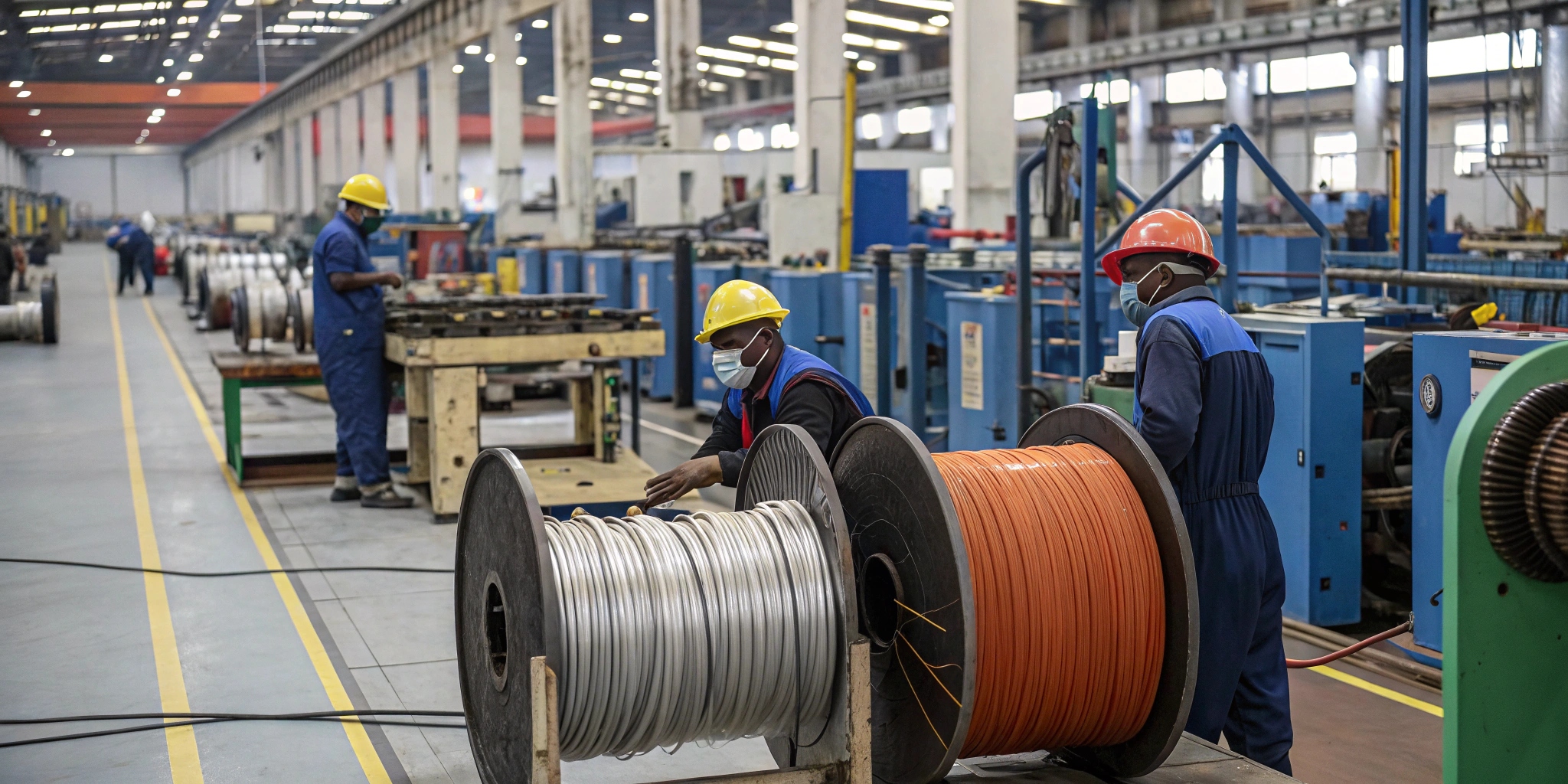Exploring the Cable Compounds Manufacturing Industry
Are you interested in understanding how cable compounds are made and why they are essential to cable performance? The manufacturing of these materials is critical for producing reliable cables.
Cable compounds play a vital role in determining the durability, flexibility, and electrical performance of cables. The right compounds can make the difference between long-lasting, efficient cables and subpar, unreliable ones.
In the cable industry, selecting the right compound material for insulation, sheathing, and other cable components is essential. This article will walk you through the different types of cable compounds, their manufacturing processes, key players in the industry, and the current trends.
What Are Cable Compounds and Why Are They Important?
Cable compounds are materials used in the manufacturing of cables to provide insulation, protection, and flexibility. These compounds can be made from various substances like polymers, fillers, and additives that determine a cable’s electrical properties, mechanical strength, and resistance to environmental factors.
Key Features of Cable Compounds
- Electrical Insulation: They prevent electrical leakage and ensure proper conductivity.
- Protection Against Environmental Factors: Compounds protect cables from moisture, UV exposure, and extreme temperatures.
- Mechanical Strength: Cable compounds contribute to the durability and longevity of cables by providing resistance to wear, impact, and abrasion.
| Key Feature | Description | Benefit |
|---|---|---|
| Electrical Insulation | Prevents electrical leakage | Ensures safe and efficient cable performance |
| Environmental Protection | Protects cables from moisture, UV, and temperature extremes | Suitable for outdoor and industrial applications |
| Mechanical Strength | Resistance to wear, impact, and abrasion | Increases cable lifespan and reliability |
What Materials Are Used in Cable Compounds Manufacturing?
The materials used in cable compound manufacturing can include various polymers (like PVC, PE, and XLPE), fillers, plasticizers, flame retardants, and other additives. These materials are chosen based on the performance requirements of the cable, such as flexibility, temperature tolerance, and fire resistance.
Key Materials Used
- Polyvinyl Chloride (PVC): PVC is commonly used for sheathing and insulation in cables. It offers flame resistance and is durable in various conditions.
- Polyethylene (PE): PE is used in low- and medium-voltage cables. It provides excellent electrical insulation properties.
- Cross-Linked Polyethylene (XLPE): XLPE is ideal for high-voltage cables due to its superior heat resistance and electrical properties.
- Flame Retardants: These are added to cable compounds to make them fire-resistant, a key feature in preventing the spread of flames in the event of a fire.
How Are Cable Compounds Manufactured and Processed?
The manufacturing of cable compounds typically involves several steps, including mixing raw materials, compounding the mixture, and then processing it into usable forms for cable production. During this process, manufacturers must carefully control factors such as temperature, pressure, and chemical composition to ensure the final product meets industry standards.
Manufacturing Process
- Mixing: Raw materials are mixed to create a homogeneous blend. This mixture typically includes base polymers, fillers, plasticizers, and additives.
- Compounding: The mixed materials are then compounded to create a uniform product with the desired properties, such as flexibility or flame resistance.
- Processing: After compounding, the cable compounds are processed into various forms, such as pellets or powders, which are later used for cable manufacturing.
What Are the Challenges and Trends in Cable Compounds Manufacturing?
The cable industry is evolving rapidly, with new challenges and trends emerging as technology advances. Manufacturers must address concerns such as the rising demand for sustainable materials, regulatory changes, and the need for cables with higher performance and durability.
Challenges and Trends
- Sustainability: There’s growing demand for eco-friendly materials in cable manufacturing. Manufacturers are exploring biodegradable and recyclable compounds.
- Regulatory Compliance: With stricter environmental and safety regulations, manufacturers must ensure their products meet local and international standards.
- Innovation in Performance: As cables are used in more demanding environments, there’s a trend toward developing high-performance materials that can withstand extreme temperatures, chemicals, and physical stress.
| Challenge/Trend | Description | Impact on Industry |
|---|---|---|
| Sustainability | Rising demand for eco-friendly materials | Promotes innovation in biodegradable and recyclable materials |
| Regulatory Compliance | Stricter regulations and standards | Ensures safer and more environmentally friendly cable compounds |
| Innovation in Performance | Developing materials for extreme conditions | Improves the durability and efficiency of cables |
What Should You Consider When Choosing a Cable Compounds Manufacturer?
Selecting the right manufacturer is crucial for ensuring high-quality cable compounds that meet your performance and regulatory needs. It’s important to assess the manufacturer’s expertise, product range, certifications, and sustainability practices.
Key Considerations
- Expertise and Experience: Choose a manufacturer with a proven track record of producing high-quality cable compounds. Pestochem has an independent technical department and a group of researchers dedicated to scientific research. We are committed to solving any problems that exist in the cable production process for you.
- Product Range: Find manufacturers that offer a variety of cable compounds to suit different application needs. Pestochem's products are diverse to meet your needs.
- Certification: Ensures manufacturers meet industry standards and certifications to ensure the quality and safety of their products. Pestochem has a series of professional certificates from production to export.
- Sustainability: Choose manufacturers who prioritize sustainable practices and eco-friendly materials. Pestochem produces high-quality low-smoke halogen-free (HFFR) cable materials. If you want to know more, please feel free to contact us.
Conclusion
The cable compounds manufacturing industry plays a vital role in ensuring that cables meet performance, safety, and environmental standards. By understanding the materials, processes, and trends, you can make informed decisions when selecting a manufacturer.
Pestochem, as an experienced manufacturer, excels in these areas when it comes to XLPE materials for power cables.
By partnering with a reputable manufacturer like Pestochem, you can be confident in the quality and reliability of your cable compounds. Their materials undergo rigorous testing, comply with environmental regulations, and offer excellent flame retardant and electrical properties.

